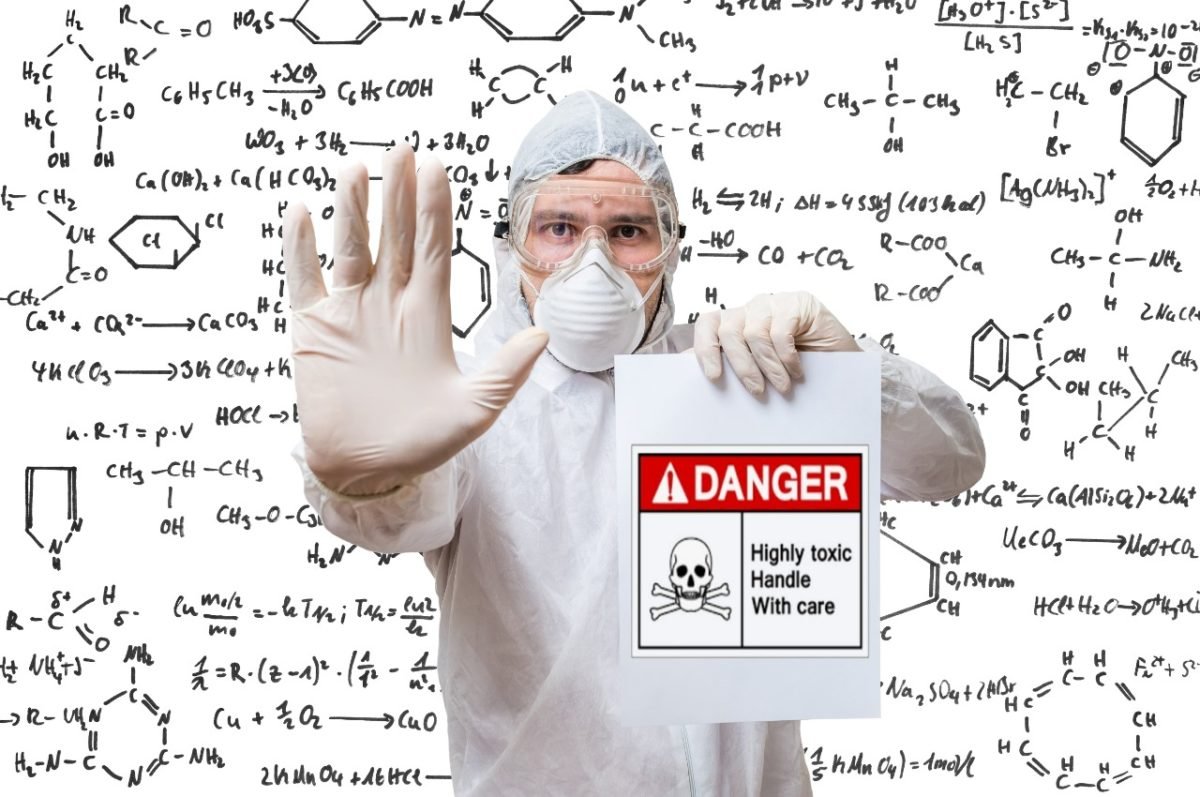Free shipping to selected countries with minimum order size.

A guide to skincare ingredients that are just plain bad for your skin. The cosmetics industry relies on you buying skincare products based on the effectiveness of their marketing and really small text on the labels that regulators make them put on the packaging. We have all become immune to that really small ingredients list.
Here’s my advice on what to look for when it comes to which skincare product ingredients are bad for your skin.
Chemical sun filters
At the top of our nasties list are the chemical sun filters used in sunscreens. These are not to be confused with mineral sunblocks. Chemical filters absorb the sun’s harmful rays whereas mineral sunblock refracts the harmful rays away from your skin.
Up until recently, chemical sun filters have been the more popular choice with consumers. One of the main reasons is strictly out of vanity. People don’t like the ghostly white look mineral sunblocks offer, but here’s the downside to being vain.
Studies at the University of Hawaii and 6 other countries (Australia, Mexico, Palau, Key west, Virgin Islands, Aruba) have banned sunblocks that use these ingredients.
- Oxybenzone
- Octocrylene
- Avobenzone
- 4-methyl-benzylidene camphor
- Triclosan
- Methyl paraben
- Ethyl paraben
- Butyl paraben
- Benzyl paraben
These sunblock ingredients are killing off the coral reefs. And here’s a horrifying fact – a chemical such as oxybenzone is so toxic, that a single drop diluted into a water solution with the volume of six Olympic sized swimming pools is enough to start killing coral.
You have to ask yourself if sunscreen and other skincare products with these chemicals are really what you want to slather your body with? Because if they kill coral reefs at such a low dose and at an alarming rate, think about what they do to your body.
Just 20 minutes after applying sunscreen that contains the chemical oxybenzone you can already measure it in your urine. Now that you know this, ask yourself; is this something you want in your system?
According to studies over 80% of the population in the USA has oxybenzone in their blood.
Some of these ingredients are considered to be endocrine disruptors which are chemicals that interfere with our hormones. A little white streaking from mineral sunblock might be a small price to pay to get away from these ingredients. Marketing companies are hard at work selling an unrealistic idea of skincare.
Just think about the classic image of a lifesaver on the beach with a white nose. Worry less about how you look and more about the poison entering your system. Wear your natural sunblock as a badge of honour, and others will too.
Aluminum Chlorohydrate
Next on our nasties list is aluminum which sneaks into our skincare routine in many forms, but a common ingredient is Aluminum Chlorohydrate found in deodorants, mostly antiperspirants.
The function is to intentionally clog your pores and stop you from sweating. This alone is not a natural process as this is how toxins are released from our bodies. Luckily there is an alternative and the function of deodorant is completely different from an antiperspirant.
Deodorants still allow you to sweat but the deodorant, as the word already implies, helps to combat odour-causing bacteria, hence neutralizing the bad smell.
Studies have shown repeated usage of a product in the same place, are starting to reveal some interesting statistics, associated with breast cancer, Alzheimer’s, chronic bone damage and anaemia.
You, the consumer, need to go in with eyes wide open and turn to safer natural choices that don’t contain these aluminum ingredients.
Polyethylene Glycols
Next on the nasties list are PEG’s or Polyethylene Glycols.
Usually, a number is associated with the PEG – for example, Peg 40 is listed as hydrogenated castor oil.
Now that might sound pretty harmless at first, and from a cosmetic manufacturers perspective, PEG is a favourite ingredient because it’s cheap and works well as a solubilizer to mix oils in water for products like face mist, body spray and shampoos.
The reason Polyethylene Glycols is 3rd place on my list of nasty ingredients that are bad for you is because when PEG is made and isolated, an ingredient called 1,4-dioxane is used and leaves impurities behind that are then blended into the final product.
If it is not properly removed or cleaned these solvents are known carcinogens.
Preservatives
Preservatives are next on the list of skincare ingredients that are bad for you.
We have all heard of Formaldehyde or Parabens, but let’s first get real about preservatives. We have to face the fact that they are necessary, and here is why.
Anything that contains water will eventually harbour bacteria, yeast and mould.
If I give you a glass of water and ask you to wait a week or a month before drinking it you wouldn’t because you already know, even without a microscope, that the glass of water is contaminated with … bacteria, yeast and mould.
Not having preservatives can actually do more harm than good. The good news about preservatives is that a little goes a long way and there are some considered to be “natural” and the amount required to make a product safe can be as low as 1%.
Please don’t fall into the trap that Vitamin E is a natural preservative. It is an antioxidant and while it will help the stability of a product it can and must not be the sole preservative in a product.
Now that we have established that we need preservatives, what do we need to look out for?
Formaldehyde
Not too much needs to be said about formaldehyde. I hope you know it’s an embalming fluid for preparing corpses, but what you definitely need to know is that it is known for causing allergic reactions and skin irritation.
The EPA (Environmental Protection Agency) has classified formaldehyde as a probable human carcinogen. I don’t know about you, but “probable” is worth avoiding in my book. And that’s from the EPA.
Parabens
Parabens are a problem because they easily penetrate the skin and are considered to be an endocrine disruptor, just like with the chemical sun filters by mimicking estrogen.
Parabens can be found in human breast tissue biopsies, and it is suggested there might be a link between cosmetics used containing this ingredient.
Perfumes
The most annoying thing about “Perfumes” being listed as an ingredient is that it’s a proprietary formula. In other words, it’s a secret protected by copyright.
This means we don’t get to know what the ingredients are in the toxic soup, generically named “perfume” which can take over a thousand chemical compounds to create a single fragrance.
We are exposed from morning until night to these fragrances which create common side effects for people ranging from chronic headaches to brain fog.
The shampoo, body wash, deodorant, hair gel, floor cleaner, laundry soap, car freshener, incense sticks and even the bedding we sleep in are all drenched in fragrances that are all loaded with toxic chemicals that we don’t get to put a name to.
One name however does keep popping up: Phthalates.
Phthalates
This one chemical is so bad that fragrance companies are slowly starting to list their perfumes as Phthalate-free as a benefit.
Phthalates are used in the plastic industry to make plastics more durable. So when the largest-selling fragrance companies on the planet start advertising products as “Phthalates-free” we have to wonder about the other products in their range.
Petroleum
Petroleum-based mineral oils are largely derived from petroleum liquids using various petrochemical extraction methods that use solvents.
Many of these solvents are considered carcinogens. In addition, these oils can cause itchy and burning sensations along with rashes and acne.
Here are some ingredient names to watch for:
- Paraffinum Liquidum
- Petrolatum
- Cera Microcristallina
- Ozokerite
What can I do?
This information may seem daunting at first, but you are in control of the most powerful weapon known to capitalism – you get to choose what products you spend your hard-earned money on.
Manufacturers will learn fast and start making safer skincare products that are better for you and the planet only when they learn there are better alternatives that you personally support with your own money.
There are better options and healthier alternatives for your skin, family, friends, kids, planet – and even your pets.

What are the alternatives?
The choice is yours! Find and support brands that are committed to creating products that are safe for you and your family but also the environment. Chances are if your skincare company cares about both the above, then look that they are also committed to
- Transparent labelling of ingredients
- Use natural and plant-based ingredients
- Invest in creating zero-waste skincare products
- Massively reduce carbon emissions by manufacturing products that allow you to add water at home
We have only one body and one planet, both are precious to us. Be kind to each other, your skin and the environment.

